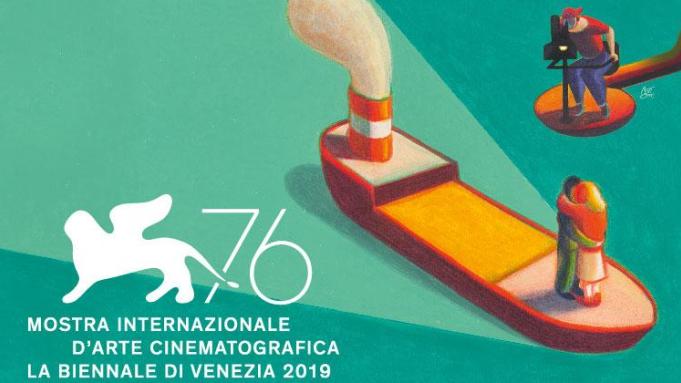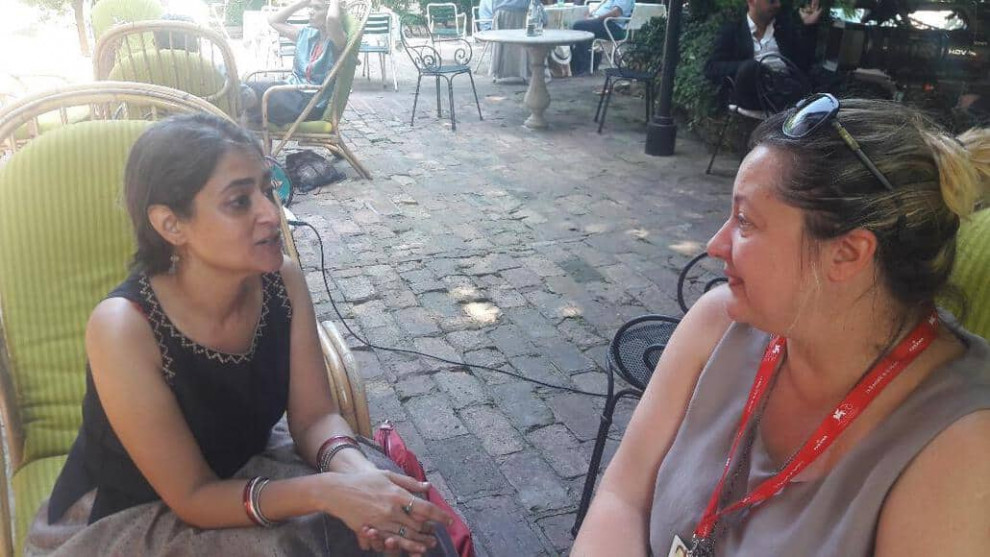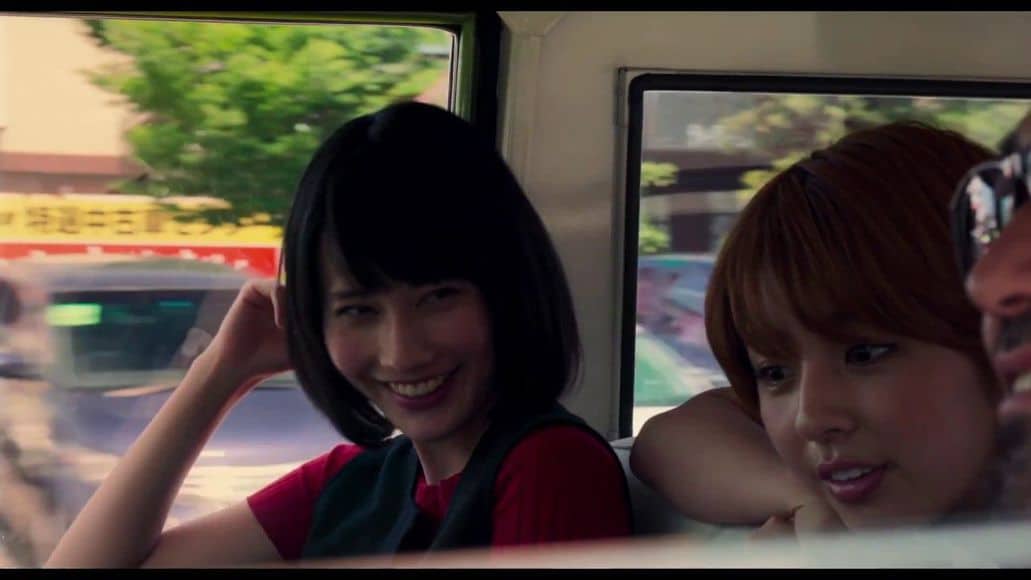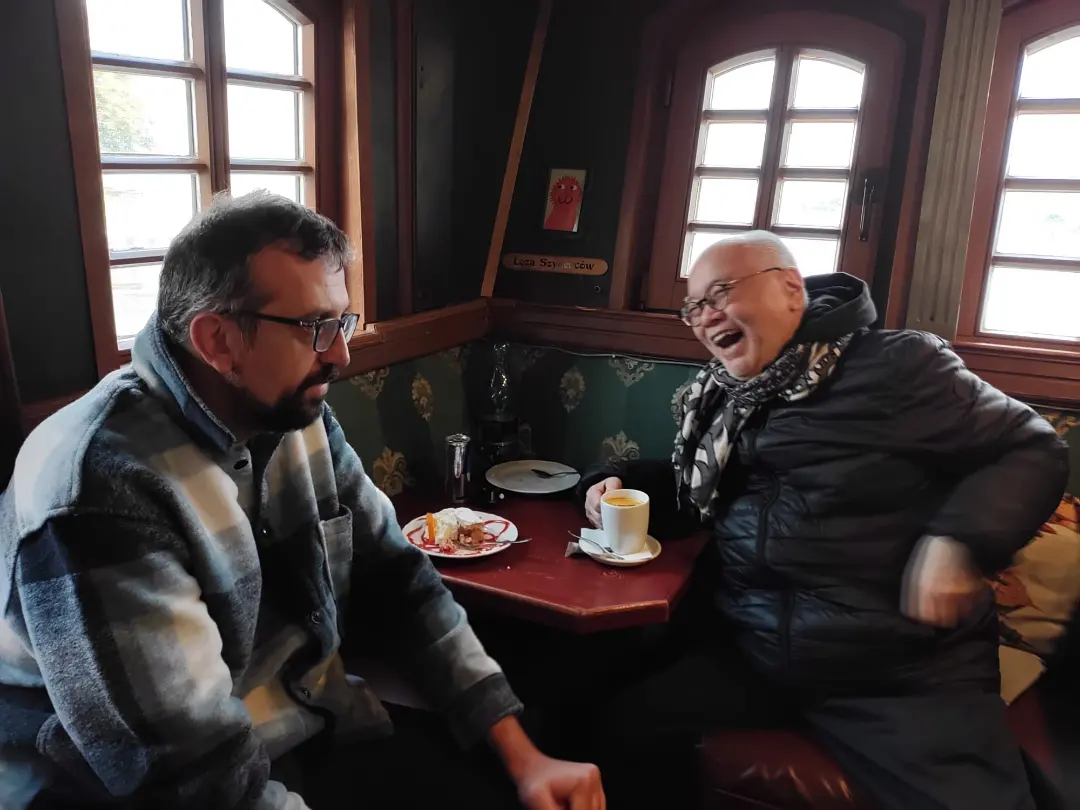Gitanjali Rao's hand-painted feature length animation “Bombay Rose” was the opening film of the Critics Week sidebar of the Venice International Film Festival, and one of the two long-awaited animations shown at the Mostra. Rao's love story plays on the streets of Mumbai, where the flower girl Kamala (Cyli Khare) meets the flower boy Salim (Amit Deondi), in a milieu marked by poverty, dreams of better life and bitter fight for survival. At times overcrowded with details, this melodrama with fantastic elements shows dangers lurking around many corners of society's less fortunate communities, but it also manages to catch the spirit of the time with the change of colour palettes and the type of animation techniques.
We spoke to Gitanjali Rao about her animation technique and the importance of adapting the animation style to diverse film characters, the Bollywood macho imagery and its influence on young men, in the hotel “Quattre Fontane” after the first press screening of “Bombay Rose”, still a couple of days short of its official premiere.
“Bombay Rose” screened at Venice Film Festival 2019

You wrote the script for the movie in which every character is meticulously developed. When you work on your stories, be it for short films or the feature length, are you inspired by your direct environment?
Absolutely. Almost everything in the film is autobiographical, because it comes from the interaction with people and from understanding the situations that I observe. In India, you just need to be a woman to experience certain things. I love wearing the jasmine garlands myself, so I am continuously making the effort of buying the flowers from various girls who usually travel by train to the city. I don't ask them personal questions, but I follow their lives day by day and try to understand what they must be going through and how they are trying to survive. Those young boys and girls are attracted to each other, they are flirting, and their hormones are raging. With time, you realize that the boys are only watching Bollywood films with macho men in main roles, and they try to dress up as their heroes. They have a tough life, so they use Bollywood as an escape. I was watching this happen and I knew that I wanted it to be the part of my story. I decided about youth's background, where they work, and how all of it would cinematically work, which was the next level. I wanted to have a girl who sells jasmine garlands and a boy who sells flowers to meet, and then I read articles about how flowers that are being sold on the street are stolen from graveyards. I found that detail great for the narrative, and it was life itself as an actual trigger-point for fiction to bring all the pieces together. My fiction doesn't rely completely on facts, nor is it judgmental and it also doesn't force you to take one side or the other. When you are sitting on a bus in Bombay and it takes you one hour to get from one place to the other because you are stuck in the traffic all the time, you observe the city through the window. You see what's happening on the streets, you get curious about the life of many people. You see them and you want to know what they do.
“Bombay Rose” is as much a love story, as a study of city's multicultural complexity. The two young people meet difficulties in fulfilling their wish to be together.
The reason why their love shatters is not religion. What you see is people asking them to be careful. Salim doesn't care about it, and Kamala doesn't care about it. The fact that she is a Hindu girl and he a Moslem boy is only understood by the man who's selling spices. I don't give the external factor – the other people – the victory of crushing their love, which is crushed by other reasons, when Salim comes under the car of a Bollywood hero he idolized so much. You might say that life is ironic and unpredictable. You never know in which way it will end. People are creating fear and destroying love and beautiful things, and it is fear that I'm questioning in “Bombay Rose”. If I let the fear taking over the film, that would have become a conventional story. Secondly, I showed that famous people can get away with anything, and it's happening all the time that rich and influential individuals don't get punished for their actions. What if you were run over by your idol? You make people question certain things.

It took you six years to complete the film. Was it due to painting it frame by frame?
No, the production took only two years. The rest of the time was spent in the post-production. There is no state financing for films in India. Absolutely nothing. Films are financed privately, essentially Bollywood films, so experimental and alternative ones don't get the necessary support, which is why I found my French coproducers first. They were interested in project and willing to support me, but the tougher part was to find the Indian production partner. That is what I spent four years on. When we finally found one, it was again financed through individuals. Since my previous films were in Cannes, the French immediately thought that I must be good. After I found my Indian counterpart, making the film was pretty fast – only 21 months. We had a small team of about 80 people, out of which 18 animators.
What is interesting is that the type of animation was adapted to the characters in the movie: Kangra miniature painting surrounding Kamala or the monochrome world surrounding Madame Souza, the English teacher…
The characters were of interesting background and equally, it's a graphic form of art. I wanted to explore the miniatures and move them. I knew my girl Kamala and I wanted to make her part of the Indian, which made it easy to connect and to be authentic. If she comes from that place, than her dreams will be influenced by the art she sees around her. This is my artistic take on it. If Salim comes from Kashmir, he is not going to be familiar with the form of art in the South of India where he's never been, and it should be from his place, and I wanted to explore the truck art style. The fact he came from Kashmir was shaped by my interest for the artform I wanted to use, and only then the stories got linked. Same with the black & white Indian cinema. I was fascinated by it and I wanted to animate it. Then, I was reading about women who used to be dancers in the late 1950's – 1960's and who led very miserable lives, which gave me a great excuse to have this story, to have these characters and exactly that graphic style. In parallel fashion, when I did the story, I was thinking of all characters.

You also have a film in the film.
As I told you, when I saw those young boys and girls on the street trying to woo each other, I just knew what they were talking about, among other things about Bollywood movies. Shah Rukh Khan is one of their greatest idols, so they are led to believe if they give a rose to a girl, she'll fall for them. This is their escape route; they believe in it and they try it out. Sometimes it is nasty, because you have a toxic masculinity in Bollywood. Kids are repeating those dialogues on the street, something along the lines “I am not taking no for an answer”, which is something one should question. And it doesn't stop, because it's rooted and idolized. With #metoo, people have finally started to question the toxic masculinity. And this is exactly why I'm confronting Salim with it – the guys who he idolizes will crash him with his car. You are cheating the audience if you say: “if he can, I can do it too.” It doesn't work like that.
In “Bombay Rose”, you are showing dance bars that do not exist in the city anymore.
It's a fact that in 2005, the dance bars were shut down over night. The women went out of jobs. This type of work is not prostitution, it's just dancing, and the women had a life. They would get a tip, they earned money, the migrant- or college girls would finance their education. Many of them were sending money home because the families are poor. They don't even want to know what the daughter is doing. All of these women were suddenly jobless, and many had to turn to prostitution. So, they were not saved, they were pushed at the brink of society. The same refers to children labour. You feel like you're saving a child by stopping him to work, but if you don't let them to work, and the state doesn't provide for them, they will starve to death. The system has to change, we don't need our wound just being bandaged.















